 |
by Emma Roth on (#6Z3C4)
Amazon is splitting up its Wondery podcast studio just four years after acquiring it, as first reported by Bloomberg. As part of the change, the studio will shed around 110 employees, while Wondery CEO Jen Sargent will leave the company. In a statement to The Verge, Amazon spokesperson Alice Zhou confirmed that while Wondery will [...]
|
The Verge
| Link | https://www.theverge.com/ |
| Feed | http://www.theverge.com/rss/index.xml |
| Updated | 2025-11-08 22:17 |
 |
by Tom Warren on (#6Z3C5)
8BitDo has created its first wireless Xbox controller in partnership with Rare, a game studio acquired by Microsoft. The officially licensed controller features a gold and blue design, with plenty of Easter eggs to celebrate Rare's 40th anniversary. The $89.99 8BitDo Ultimate 3-mode Controller for Xbox - Rare 40th Anniversary Edition (yes, that's the product [...]
|
 |
by Casey Newton on (#6Z392)
Hello, and welcome to Decoder! This is Casey Newton, founder and editor of the Platformer newsletter and cohost of the Hard Fork podcast. I'll be guest hosting the next few episodes of Decoder while Nilay is out on parental leave, and I'm very excited for what we have planned. If you've followed my work at [...]
|
 |
by Hayden Field on (#6Z391)
Scenario: A radiologist is looking at your brain scan and flags an abnormality in the basal ganglia. It's an area of the brain that helps you with motor control, learning, and emotional processing. The name sounds a bit like another part of the brain, the basilar artery, which supplies blood to your brainstem - but [...]
|
 |
by Andrew J. Hawkins on (#6Z393)
Tesla approved a restricted stock award of 96 million shares, worth about $29 billion, to incentivize" the controversial billionaire to remain at the head of the company during a protracted legal battle over his original pay package. Last year, a Delaware court voided Musk's pay package, valued at more than $50 billion, arguing that the [...]
|
 |
by Jess Weatherbed on (#6Z378)
Spotify is increasing prices in several regions outside of the US, just days after posting disappointing earnings. Spotify announced on Monday that Premium subscribers across Europe, South Asia, the Middle East, Africa, Latin America, and Asia-Pacific will be notified about pricing changes over the next month," providing an example email showing a 1 monthly increase [...]
|
 |
by Adi Robertson on (#6Z2RE)
On Monday, the Freedom of the Press Foundation filed a complaint against Federal Communications Commission Chairman Brendan Carr. The filing, sent to the Office of Disciplinary Counsel at the DC Court of Appeals, alleges that Carr had repeatedly broken basic principles of conduct as a licensed attorney, including by leveraging his power to control media [...]
|
 |
by Emma Roth on (#6Z2RF)
The original Nintendo Switch, which has cost $299.99 in the US since its release in 2017, is now priced at $339.99 on Nintendo's online store. Other first-gen Switch models are now more expensive, too, with the Switch OLED going from $349.99 to $399.99, and the Switch Lite increasing from $199.99 to $229.99. Nintendo said on [...]
|
 |
by Antonio G. Di Benedetto on (#6Z2RG)
Part of me still can't believe it, but Lenovo did the thing: it took a bonkers concept for a laptop with a rollable screen and built the tech into something you can actually own and use like a normal computer. Except, as conventional as the ThinkBook Plus Gen 6 can be, it's far from a [...]
|
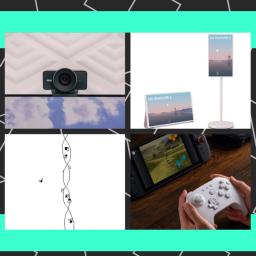 |
by Jay Peters on (#6Z2Q5)
Hi, friends! Welcome to Installer No. 92, your guide to the best and Verge-iest stuff in the world. (If you're new here, welcome, I've kept my phone case on all week, and also you can read all the old editions at the Installer homepage.) This week, I am finally smashing my way through Donkey Kong [...]
|
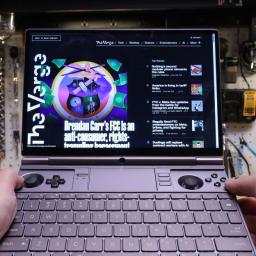 |
by Sean Hollister on (#6Z2KN)
The simple joy of gadgets - that's what Today I'm Toying With" is all about. It's our video series where we try to encapsulate that joy of playing with technology, sharing what it's like to experience gadgets that not all of us get to touch! Like a 3D printer that prints delicious chocolate, or the [...]
|
 |
by Brandt Ranj on (#6Z2FB)
If you're looking to upgrade an older Android smartwatch, or want to give wearables a try for the first time, Samsung's Galaxy Watch 8 is a compelling choice. It has a new design, lets you access Google's Gemini AI from your wrist, and has a handful of new health and wellness features. It launched on [...]
|
 |
by Lauren Feiner on (#6Z2DV)
The sudden firing of two high-ranking antitrust officials this week is signaling upheaval at an agency responsible for arguing some of the biggest tech monopoly cases in decades. Two top deputies to Department of Justice Antitrust Division chief Gail Slater were fired earlier this week for what a DOJ official would only explain as "insubordination" [...]
|
 |
by Tina Nguyen on (#6Z2CT)
While the summer doldrums have hit Washington, the MAGA influencers can never truly go on vacation, especially if they've spent their careers promising to reveal the truth about Jeffrey Epstein. Although their politicians are now in power, they're getting stonewalled, and in the absence of juicy "Epstein files" to feed to their audiences, a new [...]
|
 |
by Jay Peters on (#6Z2CV)
I didn't expect a brief game about flies to make me emotional. But when I finished Time Flies, I nearly began to cry. Time Flies initially seems very silly. You play as a little buzzing fly that has to try and accomplish a bucket list of tasks before it, well, kicks the bucket, something that [...]
|
 |
by Victoria Song on (#6Z2BR)
"We need to talk." Nobody likes to hear those words from their spouse. Especially when it's delivered in a grave tone as you rot on a couch in a grubby blankie, staring like a zombie while doomscrolling. "Wut?" I said, very intelligently. What came next was a compassionate but firm speech about how I was [...]
|
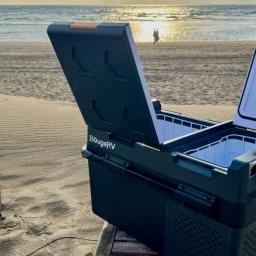 |
by Thomas Ricker on (#6Z291)
Keeping humans alive at home in post-agrarian societies requires refrigeration. Meat bags on the move must either load up a cooler with ice for a soggy weekend barbecue or do the evolved thing and use a 12V fridge instead. The $509.99 battery-powered BougeRV CRD2 40 refrigerator and freezer combo I've been testing for the last [...]
|
 |
by Alex Heath on (#6Z25Z)
It has been another busy week. GPT-5 appears to be just around the corner... This week, I decode the meaning behind Mark Zuckerberg's "personal superintelligence" manifesto, and what it means for the broader AI race. Keep reading for my chat with a Figma exec on the company's IPO day, a bunch of good links, and [...]
|
 |
by Jay Peters on (#6Z260)
Delta Air Lines is explaining more about its AI-assisted dynamic pricing model after coming under scrutiny for recent comments about the pricing. In November, Delta president Glen Hauenstein said at an investor day that we will have a price that's available on that flight, on that time, to you, the individual." However, responding to questions [...]
|
 |
by Jay Peters on (#6Z261)
Apple CEO Tim Cook boasted about the potential of AI and the company's approach to developing it in a rare all-hands today that was reported on by Bloomberg. Apple has been slow to roll out some of its AI features and has stumbled with a planned AI-powered upgrade to Siri, which it delayed earlier this [...]
|
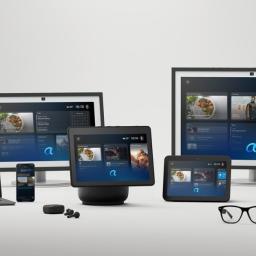 |
by Jennifer Pattison Tuohy on (#6Z24V)
In the week's least surprising news, Amazon CEO Andy Jassy revealed that the company is exploring ways to bring ads to Alexa Plus, its new generative-AI-powered voice assistant. During a conference call following the company's second-quarter earnings report, Jassy said that "there will be opportunities, as people are engaging in more multiturn conversations [with Alexa [...]
|
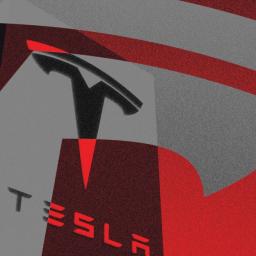 |
by Emma Roth on (#6Z24W)
A federal jury in Florida found Tesla partly liable for a deadly 2019 crash involving Tesla's Autopilot driver assist software, according to reports from The New York Times and CNBC. Tesla has been ordered to pay $200 million in punitive damages and about $43 million in compensatory damages, CBS News reports. It's a rare loss [...]
|
 |
by Jacob Kastrenakes on (#6Z22Z)
Fujifilm has raised prices on cameras and lenses across its lineup, with price hikes reaching into the hundreds of dollars. Among the hikes is an increase to the price of Fuji's ultra-popular X100VI from $1,599 to $1,799. The capable X-T5 has gone from $1,699 to $1,899. And the already very expensive GFX100 II has gone [...]
|
 |
by Brandon Russell on (#6Z230)
Finding peace among the chaos on campus can be more challenging than a midterm. But a quality pair of over-ear headphones can block out distractions when it's time to lock in. If that sounds like you, we've found a deal on the Bose QuietComfort Headphones, which are currently down to $229 ($130 off) at Amazon, [...]
|
 |
by Ash Parrish on (#6Z231)
Evo 2025, the biggest fighting game tournament in North America, starts this weekend. If you tune into one of the nine different Evo Twitch channels, you'll see some of the top players in the world compete in fighting game staples like Street Fighter and Tekken and newer games like Fatal Fury: City of the Wolves [...]
|
 |
by Andrew Webster on (#6Z205)
Just about every piece of hardware that Nintendo sells is getting a little more expensive in the US - with the exception of the Switch 2. That includes all models of the original Switch, a bunch of accessories, and even a motion-activated alarm clock. The changes were made ahead of sweeping Trump administration tariffs that [...]
|
 |
by Jay Peters on (#6Z206)
Google is largely reversing course on its plans to discontinue support for all shortened goo.gl URLs on August 25th. Goo.gl URLS that already show a message saying that they will be deactivated in August will still stop working - the company started showing the deactivation message nine months ago on URLs that showed no activity [...]
|
 |
by Hayden Field on (#6Z1X9)
On Friday, Anthropic debuted research unpacking how an AI system's "personality" - as in, tone, responses, and overarching motivation - changes and why. Researchers also tracked what makes a model "evil." The Verge spoke with Jack Lindsey, an Anthropic researcher working on interpretability, who has also been tapped to lead the company's fledgling "AI psychiatry" [...]
|
 |
by Sean Hollister on (#6Z1XA)
Yesterday, when Epic won its Google antitrust lawsuit for a second time, it wasn't quite clear how soon Google would need to start dismantling its affirmed illegal monopoly. Today, Google admits the answer is: 14 days. Google has just 14 days to enact major changes to its Google Play app store, and the way it [...]
|
 |
by Emma Roth on (#6Z1XB)
Verizon just announced a three-year price lock in April, but now the company has confirmed that it's making some adjustments" that will raise the cost of your phone bill anyway. In a statement to The Verge, Verizon spokesperson Adria Tomaszewski says the vast majority" of customers will see a price hike of less than 30 [...]
|
 |
by Jay Peters on (#6Z1XC)
Reddit is pausing its plans to let people make subreddits with content behind a paywall, CEO Steve Huffman said as part of Thursday's earnings. The company is making the change as part of a shift in how it's prioritizing its resources. Huffman said last year that the company was looking into a way for users [...]
|
 |
by Emma Roth on (#6Z1TA)
Nintendo is raising the price of the original Switch family of systems and products," the company announced on Friday. Along with the first-generation Nintendo Switch, the price change also affects the Switch OLED, Switch Lite, and select" accessories. Nintendo hasn't confirmed what the new prices are, but, as pointed out by Wario64, Target's website briefly [...]
|
 |
by Ash Parrish on (#6Z1TB)
There's a new turn in the itch.io story. In a forum post, itch.io creator and founder Leaf Corcoran has notified users that the company has begun the process of restoring thousands of NSFW pages that were deindexed - that is, content that has been removed from search results and recommendation lists. The catch is that [...]
|
 |
by Andrew Liszewski on (#6Z1TC)
Startup Brilliant Labs has announced a successor to its $349 open-source Frame smart glasses, which debuted early last year with features like AI-powered translations and the ability to identify what you were looking at. Its new $299 Halo smart glasses are priced closer to Meta's entry-level Ray-Ban models and come with upgraded AI capabilities, including [...]
|
 |
by Charles Pulliam-Moore on (#6Z1TD)
Ryan Coogler's first Black Panther feature set itself apart by pushing audiences to think about how comic book heroes and villains would fit into a world shaped by horrors like the trans-Atlantic slave trade. Black Panther and its 2022 sequel, Wakanda Forever, used their characters to comment on our reality's complicated and oftentimes ugly history [...]
|
 |
by Emma Roth on (#6Z1QK)
The Trump administration may have just axed the IRS Direct File program. During a summit earlier this week, IRS Commissioner Billy Long said the free tax filing service is gone," adding that big beautiful Billy wiped that out," as reported earlier by Bloomberg Law. President Donald Trump's Big Beautiful Bill includes a provision to establish [...]
|
 |
by Tom Warren on (#6Z1QM)
Microsoft is ending support for Windows 11 SE next year, five years after it launched the operating system on low-cost laptops that were designed to compete with Google Chromebooks. Windows 11 SE was only available on devices for education customers, such as schools, and it was supposed to convince them not to switch to Chrome [...]
|
 |
by Tom Warren on (#6Z1NQ)
Microsoft CEO Satya Nadella wanted to make Google dance two years ago, with an AI overhaul of Bing that was designed to steal Google's all-important search market share. Now, there are plenty of signs that Microsoft has successfully taken search share off Google, both in the US and worldwide. Earlier this week Microsoft reported that [...]
|
 |
by Jess Weatherbed on (#6Z1NR)
Samsung smart TVs appear to be functioning normally again after experiencing a global outage yesterday. Users across Reddit and Samsung's community forum started reporting issues with their TVs at around 5PM ET on Thursday, finding themselves unable to open apps like YouTube, Apple TV, Hulu, and Prime Video. While apps were still visible on the [...]
|
 |
by Jess Weatherbed on (#6Z1KM)
Nintendo's financial year is off to a bumper start thanks to explosive sales of its Switch 2 console. Following its launch in June, the Switch 2 console has now sold 5.82 million units according to Nintendo's Q1 earnings report, more than double the 2.7 million unit sales achieved by the original Switch in its first [...]
|
 |
by Andrew Liszewski on (#6Z1FJ)
LeapFrog has announced a new electronic learning system that swaps controllers for a camera. In fact, the LeapMove looks like an oversized, kid-friendly webcam, but is designed to connect to TVs like a console and get kids off the couch using educational games that require full-body movements to play. It's reminiscent of the Xbox Kinect [...]
|
 |
by Allison Johnson on (#6Z1C0)
Apple has been the target of a fair amount of criticism over the past year, from its AI missteps to a strong distaste for its new design ethos. But the numbers don't lie, and if Apple knows how to do anything it's sell iPhones. Specifically, three billion of them, as CEO Tim Cook announced on [...]
|
 |
by Emma Roth on (#6Z1A3)
Apple is spending a lot on President Donald Trump's tariffs. During an earnings call on Thursday, Apple CEO Tim Cook said the duties could add $1.1 billion to its costs during the September quarter. Cook says Apple has already spent around $800 million during the June quarter, which is less than the $900 million that [...]
|
 |
by Emma Roth on (#6Z1A4)
Apple CEO Tim Cook says the company is open" to mergers and acquisitions as it significantly" increases its investment in AI, as reported by CNBC. Cook's statements were made alongside the release of Apple's third-quarter earnings results, which revealed that the iPhone maker raked in $94 billion between April and June, marking a 10 percent [...]
|
 |
by Brandon Russell on (#6Z1A5)
During the most recent Prime Day, the Google Pixel Tablet with Wi-Fi and 256GB of storage briefly dropped to just $309 ($190 off) - but the deal disappeared in a matter of hours. Fast forward to today, and the deal is back, but this time it's available at Best Buy. Unfortunately, the discount is for [...]
|
 |
by Jay Peters on (#6Z1A6)
Reddit knows that it has valuable data from actual people - it's already reached deals with big AI companies like OpenAI and Google to share its data with them. But Reddit is also investing in improving its own search capabilities, and in its latest note to investors, CEO Steve Huffman says that the company is [...]
|
 |
by Sean Hollister on (#6Z1A7)
We knew DJI had a hard time importing its drones into the United States to the point that many shelves have gone bare, but it's not just drones anymore. Today marks the first time it's formally skipping the US with a non-drone product, its 8K Osmo 360 camera - and it's not clear if it [...]
|
by Ash Parrish on (#6Z17Z)
With the Switch 2, Nintendo seems to be closing the release date gap with some of its third-party games. It's a problem that plagued previous Nintendo consoles, which often received games years after other platforms, if at all. While today's Nintendo Direct Partner Showcase may have lacked the splash of anticipated third-party games like Hades [...]
 |
by Richard Lawler on (#6Z153)
Following an appeals court victory on Thursday, Epic CEO Tim Sweeney tweeted that the Epic Games Store for Android will be coming to the Google Play Store." This is despite Google's plan to appeal the Ninth Circuit panel's decision, which declined to overturn a 2023 jury verdict that Google's app store and payment system had [...]
|
 |
by Jay Peters on (#6Z154)
Aaron Sorkin is writing and directing a follow-up to The Social Network, and Jeremy Strong is reportedly the lead candidate to play Mark Zuckerberg. According to Deadline, Sources say no formal offer has been presented but that he is the top choice to play the Facebook founder." Jesse Eisenberg played Zuckerberg in the first film. [...]
|